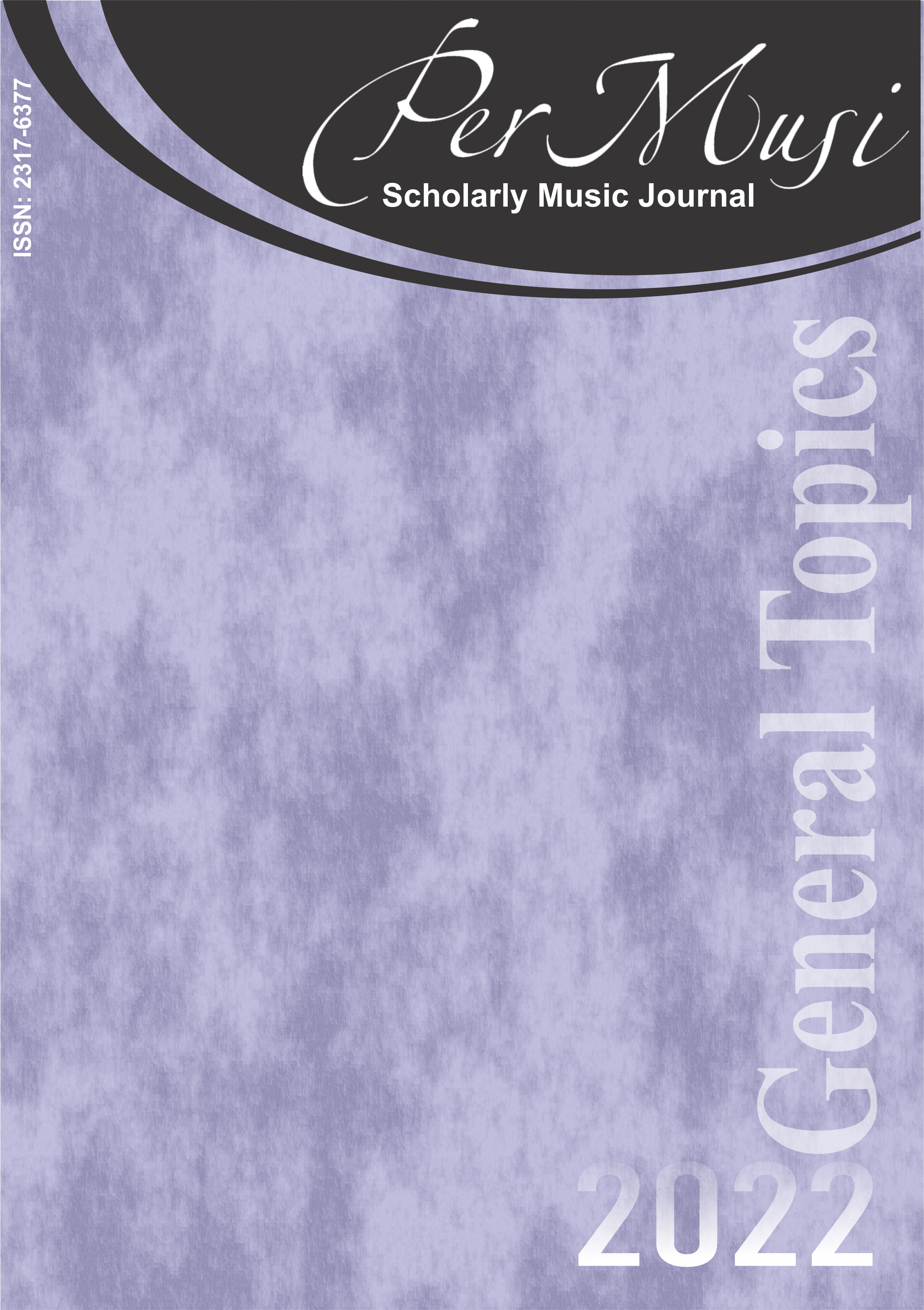Comunicação não-verbal em contexto de aula individual de violino
DOI:
https://doi.org/10.35699/2317-6377.2022.39628Palavras-chave:
comunicação não-verbal, linguagem corporal, educação musical, ensino de música, ensino de violinoResumo
Este artigo resultou de uma investigação naturalista, quali-quanti, sendo um estudo de caso, vertente multi-casos. Como objetivo, identificou-se a importância de determinada comunicação não-verbal em aula individual de violino. A investigação foi realizada a partir da análise de bibliografia especializada, de ficha de observação direta da ação de um professor de violino, de bloco de notas e de entrevista semiestruturada realizada àquele. Os resultados foram triangulados e analisados, concluindo-se que determinada comunicação não-verbal, se usada conscientemente, dá ao professor a possibilidade de transmitir a sua mensagem de forma mais clara e competente, obtendo o reconhecimento pedagógico-didático por parte dos alunos, tornando o ambiente de sala de aula propício a um ensino/aprendizagem mais eficaz.
Referências
Harris, and Robert Rosenthal. 2005. “No More Teachers’ Dirty Looks: Effects of Teacher Nonverbal Behavior on Student Outcomes.” In Applications of Nonverbal Communication, edited by Ronald Riggio and Robert Feldman, 157– 192. Mawah, New Jersey: Lawrence Erlbaum Associates, Inc.
Heller, Eva. 2013:2000. A Psicologia das Cores: Como as cores afetam a emoção e a razão. (M. L. L. Silva, Trad.). São Paulo: Gustavo Gili.
Knapp, Martin. 2009:1982. La comunicación no verbal: El corpo y el entorno. (M. A. Galmarini, Trad.). Cidade do México: Editorial Paidós Mexicana, S. A.
Kurkul, W. 2007. “Nonverbal communication in one-to-one music performance instruction.” Society for Education, Music and Psychology Research 35(2): 327–362.
Mehrabian, Albert. 1971. Silent Messages. Belmont, California: Wadsworth Publishing Company, Inc.
Mesquita, R. 1997. “Comunicação Não-Verbal: Relevância na Atuação Profissional.” Revista Paulista de Educação Física 11(2): 155–163.
Messinger, Joseph. 2009. Le dico illustré des gestes. Paris: Flammarion.
Pease, and Barbara Pease. 2018:2004. Linguagem Corporal: O Guia Definitivo para a Comunicação Não Verbal, 2nd ed. Lisboa: Editora Pergaminho.
Silva, Brasil, Guimarães, Savonitti, and Maria Silva. 2000. “Comunicação Não-Verbal: Reflexões acerca da Linguagem Corporal.” Rev. Latino-am enfermagem – Ribeirão Preto 8(4): 52–58.
Urbano, Carolina. 2008. “Empatia e Simpatia em crianças: diferenças entre géneros.” Master dissertation, Lisboa: Instituto Superior de Psicologia Aplicada.
Publicado
Edição
Seção
Licença
Copyright (c) 2022 Per Musi

Este trabalho está licenciado sob uma licença Creative Commons Attribution 4.0 International License.

Exceto onde está indicado, o conteúdo neste site está sob uma Licença Creative Commons - Atribuição 4.0 Internacional.












